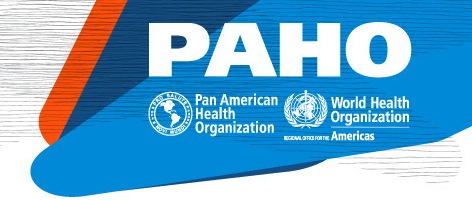The Americas should be a “global priority” for COVID-19 vaccines, PAHO Director says
| At the pandemic’s one-year anniversary in Latin America, “we are certainly not out of the woods.” |

| Washington D.C., February 24, 2021 (PAHO) Pan American Health Organization (PAHO) Director Carissa F. Etienne today described the Americas as the “epicenter” of the COVID-19 pandemic and called on the international community to make regional access to vaccines “a global priority.” “The life-saving power of vaccines should not be a privilege for the few, but a right for all – especially the countries at greatest risk like those in the Americas, which remain the epicenter of the pandemic,” Dr. Etienne said during her weekly media briefing. “Our Region needs vaccines as soon as possible, and as many as possible, to save lives.” Asserting that the Americas has been the Region hardest hit by the COVID-19 pandemic, she said “millions remain vulnerable to infection and death.” While 28 countries have started providing COVID-19 vaccines through bilateral deals with manufacturers or small donations from other countries, “that is not enough, and it is not acceptable.” In a hopeful development, countries receiving COVID-19 vaccines through COVAX – the global mechanism working to ensure equitable access – will receive hundreds of thousands of doses in the next few weeks, she said. PAHO’s Revolving Fund has been leading efforts on behalf of regional countries to purchase vaccines through COVAX. But “despite the steps being taken to deliver vaccines as quickly as possible, we are still way behind where we should be as a region,” Dr. Etienne said. “That is why we are urging the global community to make COVID vaccinations in the Americas a global priority as it is where the need and risk are greatest.” The initial distributions of COVAX-procured vaccines to countries in the region will cover about 2% to 2.5% of the population. Dr. Etienne marked the one-year anniversary of the first COVID-19 case in Brazil, pointing out that more than 10 million Brazilians have since been infected and the Americas has not yet turned the corner, with nearly 50 million in the Americas infected with the virus. While substantial reductions in COVID-19 cases have been reported recently, much of that is due to improvement in the U.S., where cases and deaths declined by 30% this week over last week. Meanwhile, pandemic conditions in Latin America and the Caribbean are mixed. Dr. Etienne said, “…I want to emphasize that we are certainly not out of the woods.” New cases have decreased dramatically in Uruguay, where rapid implementation of public health measures brought down record-high infections. In Brazil, Colombia, and Ecuador decline has been less substantial, with cases down about 4% this week compared to last week. In many countries, infection is still growing. Peru is suffering new outbreaks along its Amazonian border with Brazil and Colombia. In the Caribbean, Barbados, Saint Lucia, Saint Vincent and the Grenadines, and the Turks and Caicos are reporting a rise in new infections. “To control the virus, we must remain vigilant and committed to the public health measures we know are effective – especially as new variants circulate in the region and may increase the burden on our health systems,” Dr. Etienne said. “That is why PAHO continues to monitor the virus’s spread in our region for any changes in transmission, and why countries must continue to practice social distancing, wear masks and avoid mass gatherings.” Dr. Etienne provided assurance that COVID vaccines procured through COVAX are safe and effective. The vaccines – evaluated rigorously and thoroughly by WHO and, in many cases, by national regulatory authorities – have been shown to dramatically reduce possibilities of severe symptoms. “Through the power of vaccines, our region has eliminated smallpox, polio, rubella and measles,” Dr. Etienne said. “With COVID-19, it’s no different: safe and effective vaccines will help us turn the tide of this pandemic, but only if we can reach those most vulnerable, no matter where they live or who they are. And we will still need to maintain the proven public health measures of testing, contact tracing, quarantine, physical distancing, hand hygiene, and masks until the pandemic recedes.” |





